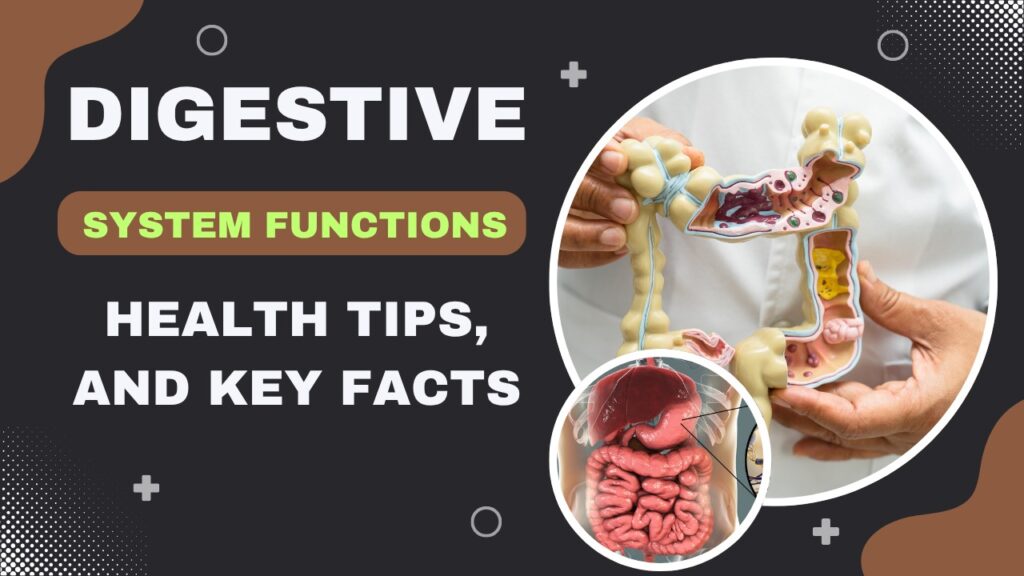Digestive system is a powerful network of organs that helps break down food into nutrients and energy the body needs. It starts at the mouth, where chewing begins the process, and continues through the esophagus, stomach, small intestine, and large intestine, ending at the rectum. Each organ has a special job, making digestion a step-by-step process that helps the body absorb important nutrients and get rid of waste.
This system does more than just process food. It supports the immune system, protects against harmful bacteria, and helps regulate body functions. The stomach breaks down food using acid and enzymes, the small intestine absorbs nutrients, and the large intestine removes waste and reabsorbs water. Organs like the liver and pancreas also support digestion by producing bile and digestive juices.
Taking care of the digestive system is key for good health. A healthy diet, enough water, regular physical activity, and stress control can all keep digestion working smoothly and help the whole body stay strong.
🧬 Understanding the Digestive System
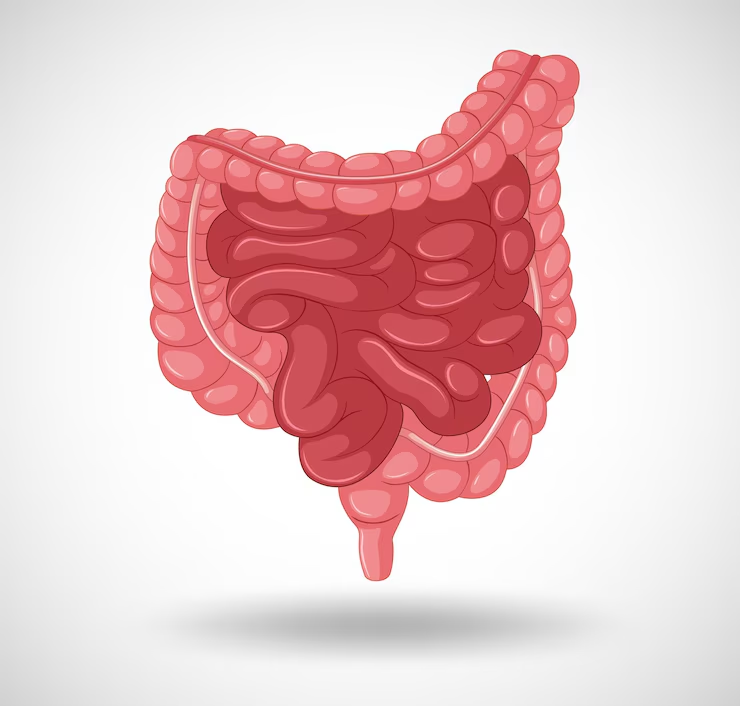
The digestive system includes the gastrointestinal (GI) tract and several accessory organs that work together to digest food. This system helps the body break food into smaller parts, absorb nutrients, and remove what the body doesn’t need. It plays a key role in keeping us healthy by making sure the body gets the energy and nutrients it needs.
The GI tract is a long, connected tube that starts at the mouth and ends at the anus. It includes the mouth, esophagus, stomach, small intestine, large intestine, and rectum. Food moves through this tube in a specific order, allowing each part to perform its job in the digestion process.
As food moves through the GI tract, it is broken down by both physical movement and digestive juices. The small intestine is especially important because it absorbs most of the nutrients the body needs from the food we eat.
Accessory organs like the liver, pancreas, and gallbladder also help with digestion. They release special substances such as bile and enzymes that make it easier for the body to break down fats, proteins, and carbohydrates.
Key Components of the Digestive System
Mouth (Oral Cavity): This is the initial point of entry for food into the digestive system. Here, mechanical digestion begins as food is broken down into smaller pieces through chewing. Simultaneously, chemical digestion starts with the help of enzymes found in saliva, which begin breaking down carbohydrates.
Esophagus: The esophagus is a long, muscular tube that serves as a passageway for food. It connects the mouth to the stomach and uses coordinated muscular contractions, known as peristalsis, to move swallowed food down the digestive tract.
Stomach: The stomach is a flexible, hollow organ that plays a key role in digestion. It produces strong acids and digestive enzymes that work together to break food into a thick, semi-liquid substance known as chyme, preparing it for further digestion in the intestines.
Small Intestine: Divided into three segments—the duodenum, jejunum, and ileum—this is the main site for digestion and nutrient absorption. It absorbs essential vitamins, minerals, and other nutrients into the bloodstream.
Large Intestine: The large intestine absorbs remaining water and minerals from indigestible food material. It also compacts this waste into solid form (feces), which is then stored until excretion.
Accessory Organs:
Liver: Produces bile, which emulsifies fats.
Pancreas: Secretes digestive enzymes and bicarbonate to neutralize stomach acid.
Gallbladder: Stores and concentrates bile, releasing it into the small intestine.
🔄 The Digestive Process: From Ingestion to Elimination
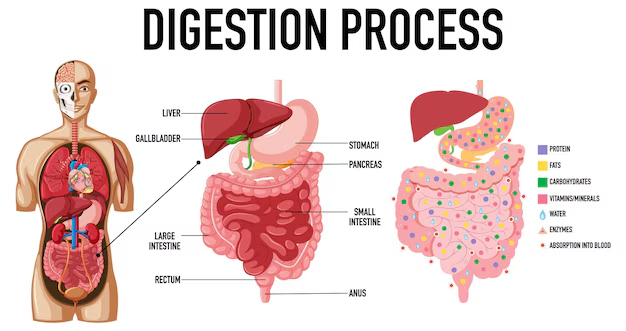
Ingestion and Propulsion
The digestive system begins its function in the oral cavity, where food is ingested and broken down mechanically through chewing. Simultaneously, chemical digestion starts as saliva—containing the enzyme amylase—mixes with food, initiating the breakdown of carbohydrates. The chewed food is shaped into a soft mass called a bolus, which is then transported down the esophagus. This movement is facilitated by peristalsis, a series of rhythmic, wave-like muscle contractions that propel the bolus toward the stomach.
Mechanical and Chemical Digestion in the Stomach
Once food reaches the stomach, the digestive system engages in both mechanical and chemical processes. The stomach secretes gastric juices, including hydrochloric acid and the enzyme pepsin, which begin the breakdown of proteins. Simultaneously, the muscular walls of the stomach churn the food, converting it into a partially digested, semi-liquid mixture known as chyme. This chyme is slowly released into the small intestine for further digestion.
Nutrient Absorption in the Small Intestine
The small intestine plays a critical role in the digestive system as the main site for nutrient absorption. Chyme first enters the duodenum, where it is mixed with bile from the liver and gallbladder, as well as enzymes from the pancreas. These secretions help break down fats, proteins, and carbohydrates. The subsequent sections—the jejunum and ileum—are lined with finger-like projections called villi and microvilli, which maximize the surface area for efficient nutrient absorption into the bloodstream.
Water Reabsorption and Waste Formation in the Large Intestine
The large intestine contributes to the final stage of the digestive system by reclaiming water and electrolytes from undigested food material. This process helps solidify waste into feces. Additionally, the colon hosts beneficial bacteria that ferment remaining carbohydrates, generating gases and synthesizing certain vitamins. The processed waste is ultimately stored in the rectum until it is excreted from the body through the anus.
🧠 The Enteric Nervous System: The “Second Brain”
The enteric nervous system (ENS) is a detailed network of nerve cells located within the walls of the gastrointestinal tract. It is a major part of the digestive system and plays an essential role in regulating various digestive functions. Unlike other systems, the ENS works mostly on its own, without needing constant direction from the brain or spinal cord.
Because of its independence and complexity, the ENS is often called the “second brain.” It has millions of neurons that manage key tasks within the digestive system, including the release of digestive enzymes and the movement of food through the intestines using muscle contractions called peristalsis.
Even though the ENS functions on its own, it also communicates with the brain through the vagus nerve. This connection helps coordinate activities between the digestive system and the rest of the body, especially in response to stress or relaxation.
The ENS influences not only digestion but also overall health. A well-functioning enteric nervous system supports a balanced digestive system and contributes to better well-being.
🦠 The Gut Microbiome: Beneficial Bacteria in Digestion
The human digestive system contains trillions of tiny living organisms, known as the gut microbiome. These microorganisms, mainly bacteria, are found throughout the digestive tract and help the body in many ways. They assist in breaking down and fermenting dietary fibers that the body cannot digest on its own. They also produce certain essential vitamins, such as vitamin K and some B vitamins, which are important for overall health.
A healthy and balanced gut microbiome is very important for the proper function of the digestive system. These helpful bacteria protect the body by fighting off harmful germs and supporting the immune system. When the gut microbiome is balanced, digestion works more smoothly, and the body can better absorb nutrients. Keeping the gut microbiome healthy is key to maintaining a strong digestive system and overall well-being.
⚠️ Common Digestive Disorders
Several conditions can affect the digestive system, leading to discomfort and health issues:
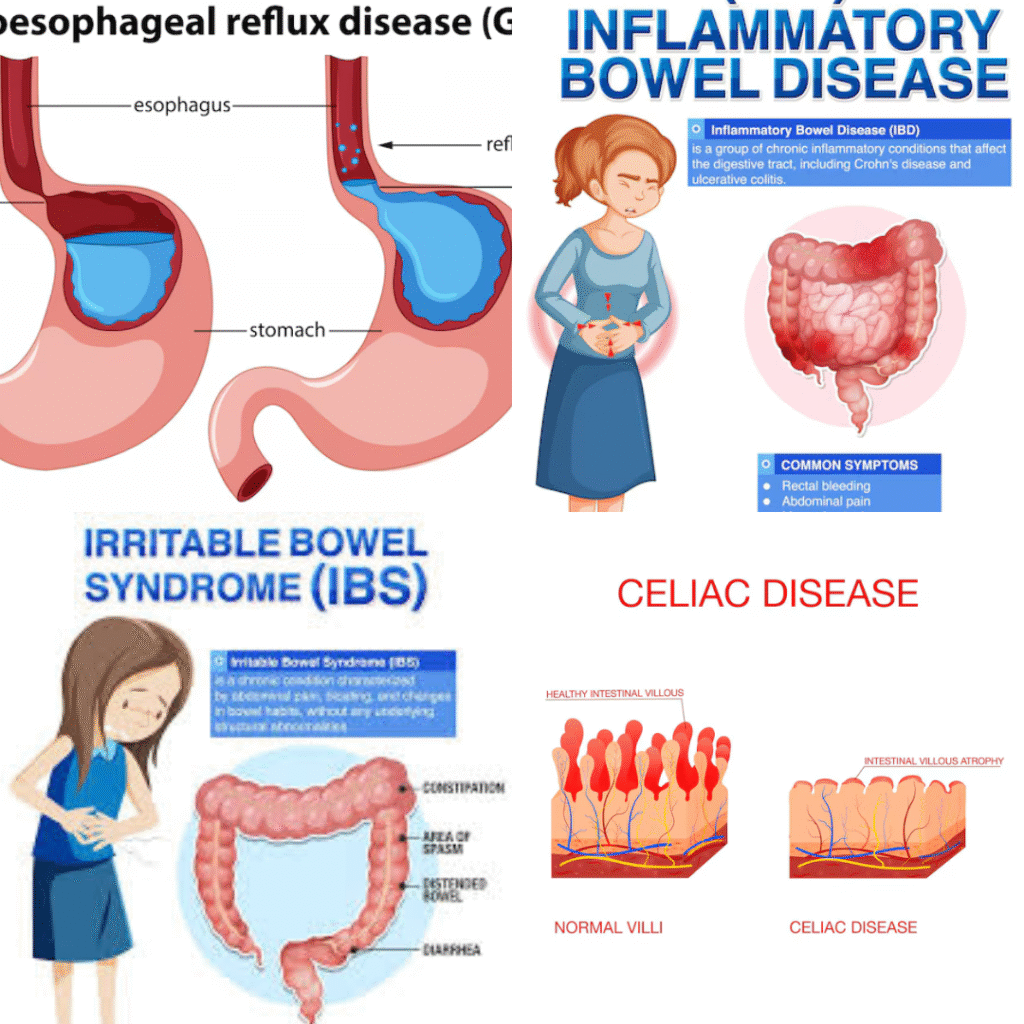
Gastroesophageal Reflux Disease (GERD): This is a long-term condition of the digestive system in which acidic stomach contents frequently flow backward into the esophagus. This backflow, known as acid reflux, can lead to a burning sensation in the chest commonly called heartburn and may eventually cause damage to the esophageal lining if left untreated.
Irritable Bowel Syndrome (IBS): IBS is a functional gastrointestinal disorder that affects the normal operation of the digestive system. It is marked by ongoing abdominal discomfort, bloating, gas, and irregular bowel habits, including constipation, diarrhea, or a combination of both. While it does not cause visible damage to the digestive tract, it can significantly affect quality of life.
Inflammatory Bowel Diseases (IBD): This group of chronic inflammatory conditions of the digestive system includes Crohn’s disease and ulcerative colitis. Both disorders involve persistent inflammation of different parts of the gastrointestinal tract, resulting in pain, fatigue, weight loss, and disrupted digestive functions.
Celiac Disease: Celiac disease is an autoimmune disorder in which the immune system reacts abnormally to gluten, a protein found in wheat and other grains. This reaction damages the lining of the small intestine, leading to poor absorption of nutrients and various digestive system issues.
🥗 Maintaining Digestive Health
Consume a Balanced and Nutritious Diet: Supporting the digestive system begins with eating a well-rounded diet that includes high-fiber foods, lean sources of protein, healthy unsaturated fats, and a wide variety of fruits and vegetables. These elements help regulate bowel movements, nourish the gut, and promote smooth digestive processes.
Maintain Proper Hydration Levels: Drinking an adequate amount of water throughout the day is essential for the digestive system. Proper hydration assists in breaking down food, transporting nutrients, and preventing constipation by keeping the intestines well-lubricated.
Engage in Regular Physical Activity: Participating in routine physical exercise improves overall health and supports the digestive system by enhancing peristalsis—the wave-like muscle movements that move food through the gastrointestinal tract—helping to prevent sluggish digestion and promote regularity.
Manage Mental and Emotional Stress: Long-term stress can interfere with the proper functioning of the digestive system. Incorporating relaxation techniques such as yoga, deep breathing, or meditation can help maintain digestive health and emotional balance.
Avoid Tobacco Use and Moderate Alcohol Consumption: Smoking and excessive alcohol intake can irritate and harm the digestive tract, increasing the risk of conditions such as acid reflux, ulcers, and liver problems. Reducing or eliminating these habits supports long-term digestive system wellness.
🧪 Fascinating Facts About the Digestive System
The human digestive system spans an impressive length of approximately 30 feet from the mouth to the anus. This extended pathway allows for the complete mechanical and chemical breakdown of food, the absorption of nutrients, and the elimination of waste materials.
The stomach’s internal environment within the digestive system is highly acidic, with a pH ranging from 1.5 to 2.5. This strong acidity is essential for breaking down food, activating digestive enzymes, and eliminating harmful microorganisms. Remarkably, it is strong enough to dissolve certain metals under specific conditions.
The small intestine, a crucial component of the digestive system, possesses an extraordinary surface area of nearly 2,700 square feet. This is made possible by the presence of tiny, finger-like structures known as villi and microvilli, which maximize nutrient absorption by significantly increasing contact area.
Over 90% of the body’s serotonin, a neurotransmitter that affects mood and digestion, is located in the gut. This highlights the deep connection between the digestive system and mental well-being.
The liver, an essential organ of the digestive system, carries out over 500 important physiological functions. These include the production of bile for fat digestion, detoxification of harmful substances, and the regulation of various metabolic processes.
Conclusion
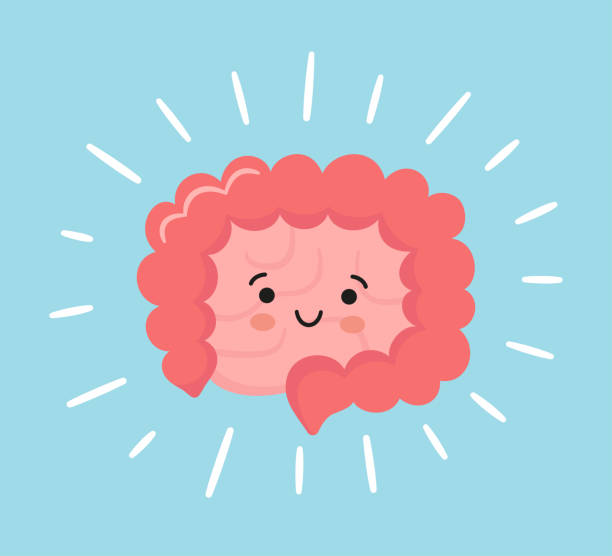
In conclusion, the digestive system is a vital and complex network that plays a central role in maintaining overall health and wellness. From the initial act of eating to the final elimination of waste, each organ in the digestive system works in harmony to break down food, absorb nutrients, and protect the body from harmful substances. With key support from the gut microbiome, the enteric nervous system, and accessory organs like the liver and pancreas, the digestive system does far more than just process meals—it also influences immunity, mood, and energy levels.
Maintaining a healthy digestive system involves eating a balanced diet, staying hydrated, exercising regularly, managing stress, and avoiding harmful habits like smoking and excessive alcohol use. Being aware of common digestive disorders and understanding how this system works can help prevent problems and support long-term well-being. A well-functioning digestive system is essential for a healthy body, making it important to care for it every day.
FAQs
- What is the main function of the digestive system ?
The digestive system breaks down food into nutrients and energy the body can absorb and use, while also removing waste. - How long is the human digestive tract ?
The entire digestive tract is about 30 feet long, starting from the mouth and ending at the anus. - What organs are part of the digestive system ?
Major organs include the mouth, esophagus, stomach, small intestine, large intestine, liver, pancreas, and gallbladder. - How can I keep my digestive system healthy ?
Eat a balanced diet, drink plenty of water, exercise regularly, manage stress, and avoid smoking and heavy alcohol use. - What is the role of gut bacteria in digestion ?
Gut bacteria help digest fiber, produce vitamins, support immune function, and protect against harmful organisms.
